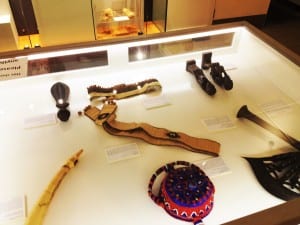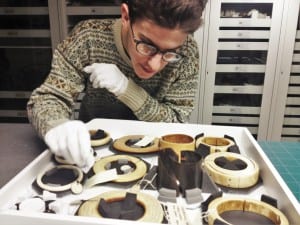Inside the collection – Part 1
Written by Ellen Forsman Larsson and Jasmine kato-Naughton
The Ethnographic collection at UCL was founded soon after the opening of the Anthropology department in the middle of the 20th century. The founder was chairman and researcher Darryl Forde, who collected and brought back a great number of artefacts from his fieldwork in the 1920’s and 30’s, which made up the initial collection. Several objects have come from donations elsewhere, a large proportion from the Wellcome foundation and private smaller institutions.
Researchers based out of UCL have since followed the tradition started by Forde, adding to the expanding number of objects, and this material focus renders UCL the only institute in the UK to offer studies of material and visual culture to its students. Today the collection hosts about 1600 objects filed under about 1300 accession numbers, with another couple of thousand photographs from fieldwork and teaching – needing to be labelled and accessioned properly. A huge variety of objects can be found: weaponry, cloths, pottery, ceramics, musical instruments, ceremonial artefacts, baskets, ornaments and jewellery. Their origins span across the entire world. The department uses the collection not only for teaching purposes, but also to engage with source communities through workshops, exhibitions and loans.
Every week, a number of students affiliated with Anthropology and related subjects volunteer in the collection. The work needed to keep it running ranges from conservation to researching object histories, to inventory and photography.
One of the groups focusses on documenting, and that’s us: Jasmine and Ellen. In a series of upcoming blogs we’ll be documenting what each of the student groups do every week and how the collection is kept running. We’ll be focussing on the processes, objects as well as the volunteers and employees behind the collection.

